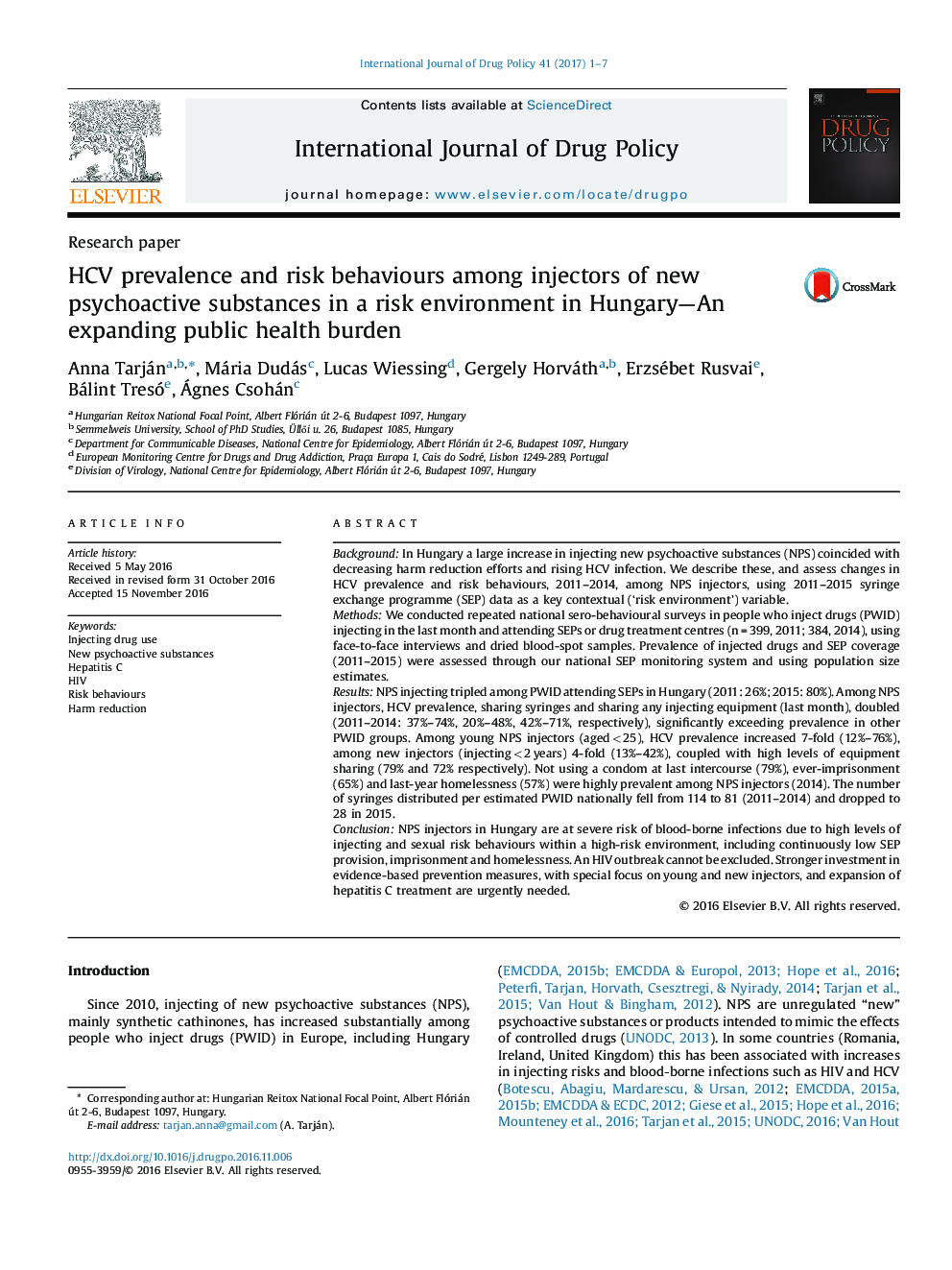| کد مقاله | کد نشریه | سال انتشار | مقاله انگلیسی | نسخه تمام متن |
|---|---|---|---|---|
| 5120722 | 1486264 | 2017 | 7 صفحه PDF | دانلود رایگان |

BackgroundIn Hungary a large increase in injecting new psychoactive substances (NPS) coincided with decreasing harm reduction efforts and rising HCV infection. We describe these, and assess changes in HCV prevalence and risk behaviours, 2011-2014, among NPS injectors, using 2011-2015 syringe exchange programme (SEP) data as a key contextual ('risk environment') variable.MethodsWe conducted repeated national sero-behavioural surveys in people who inject drugs (PWID) injecting in the last month and attending SEPs or drug treatment centres (n = 399, 2011; 384, 2014), using face-to-face interviews and dried blood-spot samples. Prevalence of injected drugs and SEP coverage (2011-2015) were assessed through our national SEP monitoring system and using population size estimates.ResultsNPS injecting tripled among PWID attending SEPs in Hungary (2011: 26%; 2015: 80%). Among NPS injectors, HCV prevalence, sharing syringes and sharing any injecting equipment (last month), doubled (2011-2014: 37%-74%, 20%-48%, 42%-71%, respectively), significantly exceeding prevalence in other PWID groups. Among young NPS injectors (aged < 25), HCV prevalence increased 7-fold (12%-76%), among new injectors (injecting < 2 years) 4-fold (13%-42%), coupled with high levels of equipment sharing (79% and 72% respectively). Not using a condom at last intercourse (79%), ever-imprisonment (65%) and last-year homelessness (57%) were highly prevalent among NPS injectors (2014). The number of syringes distributed per estimated PWID nationally fell from 114 to 81 (2011-2014) and dropped to 28 in 2015.ConclusionNPS injectors in Hungary are at severe risk of blood-borne infections due to high levels of injecting and sexual risk behaviours within a high-risk environment, including continuously low SEP provision, imprisonment and homelessness. An HIV outbreak cannot be excluded. Stronger investment in evidence-based prevention measures, with special focus on young and new injectors, and expansion of hepatitis C treatment are urgently needed.
Journal: International Journal of Drug Policy - Volume 41, March 2017, Pages 1-7